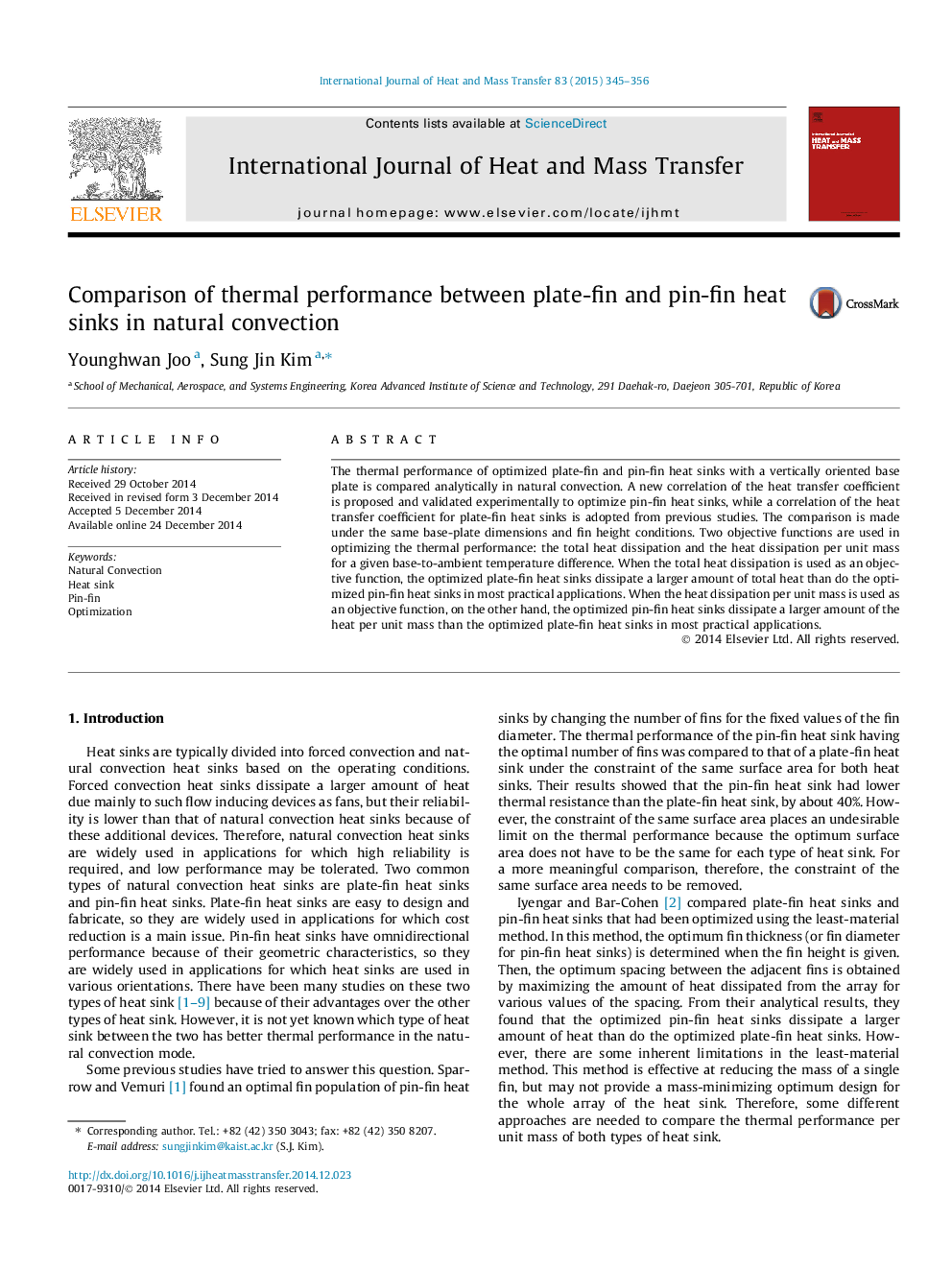| Article ID | Journal | Published Year | Pages | File Type |
|---|---|---|---|---|
| 657190 | International Journal of Heat and Mass Transfer | 2015 | 12 Pages |
Abstract
The thermal performance of optimized plate-fin and pin-fin heat sinks with a vertically oriented base plate is compared analytically in natural convection. A new correlation of the heat transfer coefficient is proposed and validated experimentally to optimize pin-fin heat sinks, while a correlation of the heat transfer coefficient for plate-fin heat sinks is adopted from previous studies. The comparison is made under the same base-plate dimensions and fin height conditions. Two objective functions are used in optimizing the thermal performance: the total heat dissipation and the heat dissipation per unit mass for a given base-to-ambient temperature difference. When the total heat dissipation is used as an objective function, the optimized plate-fin heat sinks dissipate a larger amount of total heat than do the optimized pin-fin heat sinks in most practical applications. When the heat dissipation per unit mass is used as an objective function, on the other hand, the optimized pin-fin heat sinks dissipate a larger amount of the heat per unit mass than the optimized plate-fin heat sinks in most practical applications.
Related Topics
Physical Sciences and Engineering
Chemical Engineering
Fluid Flow and Transfer Processes
Authors
Younghwan Joo, Sung Jin Kim,
